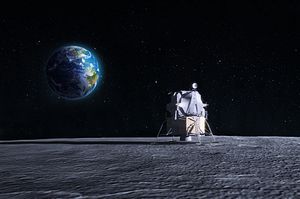As the world’s largest energy consumer, China is deeply aware of the imperative of addressing its energy trilemma – how to simultaneously achieve and balance energy security, energy equity (access and affordability), and environmental sustainability – in the coming decades, and is determined to develop clean and unconventional power to quench its thirst for energy. Indeed, powering an economy the size of China’s, especially by mid-century, solely by burning massive quantities of finite fossil fuels and relying on conventional nuclear power is not a viable option. For this reason, China is devoting considerable resources to the most futuristic and elusive of unconventional energies: nuclear fusion.
Most research in nuclear fusion has focused on deuterium and/or tritium (heavy isotopes of hydrogen) as the fuel used to generate the fusion. Deuterium is found in abundance in all water on earth, while tritium is not found in nature but can be produced by the neutron bombardment of lithium. However, nuclear fusion could become much more attainable by shifting to another isotope on the periodic table: helium-3.
Helium-3 is a helium isotope that is light and non-radioactive. Nuclear fusion reactors using helium-3 could provide a highly efficient form of nuclear power with virtually no waste and negligible radiation. In the words of Matthew Genge, lecturer at the Faculty of Engineering at the Imperial College in London, “nuclear fusion using helium-3 would be cleaner, as it does not produce any spare neutrons. It should produce vastly more energy than fission reactions without the problem of excessive amounts of radioactive waste.” Unfortunately, helium-3 is almost non-existent on earth.
It does, however, exist on the moon. Lacking an atmosphere, the moon has been bombarded for billions of years by solar winds carrying helium-3. As a result, the dust of the lunar surface is saturated with the gas. It has been calculated that there are about 1,100,000 metric tons of helium-3 on the lunar surface down to a depth of a few meters, and that about 40 tons of helium-3 – enough to fill the cargo bays of two space shuttles –could power the U.S. for a year at the current rate of energy consumption. Given the estimated potential energy of a ton of helium-3 (the equivalent of about 50 million barrels of crude oil), helium-3 fuelled fusion could significantly decrease the world’s dependence on fossil fuels, and increase mankind’s productivity by orders of magnitude.
However, supplying the planet with fusion power for centuries requires that we first return to the moon. At present, only China has this in mind, with its Chang’e program, a lunar exploration program that will send astronauts to the moon by the early 2020s. If Beijing wins the second “race for the moon,” and establishes a sustained human outpost conducting helium-3 mining operations, it would establish the same kind of monopoly that in the past created the fortunes of ventures like the East India Company. The ramifications would be significant, to say the least.
First, “China is what international relations scholars call a ‘revisionist power,’ seeking opportunities to assert its enhanced relative position in international affairs,” according to Foreign Policy. Establishing an automated or manned helium-3 operation on the moon would be a spectacular assertion. Second, with the inevitable depletion of fossil fuels on Earth, China would be in a position to gradually build a helium-3 empire in which it would control the supply of the lunar gas. The rise of such an empire would most likely be met with resistance. The prospect of China’s energy supremacy would probably lead to pervasive geopolitical influence, cause geopolitical tension and anti-Chinese alliances to coalesce, and prompt other countries – particularly the U.S. – to hasten to the moon to break the dragon’s monopoly.
Still, this scenario is hardly inescapable. On the contrary, lunar exploration and resource development could end up encouraging international cooperation and build confidence. If the spacefaring nations see a common destiny, then creative politics, diplomacy, and new legal frameworks could be used as instruments for good governance and an equitable sharing of the spoils. A new international regime for the joint development of lunar helium-3 would then be viable, with all the possibilities for the planet that would entail.
Fabrizio Bozzato is a PhD Candidate at the Graduate Institute of International Affairs and Strategic Studies – Tamkang University (Taiwan).

































